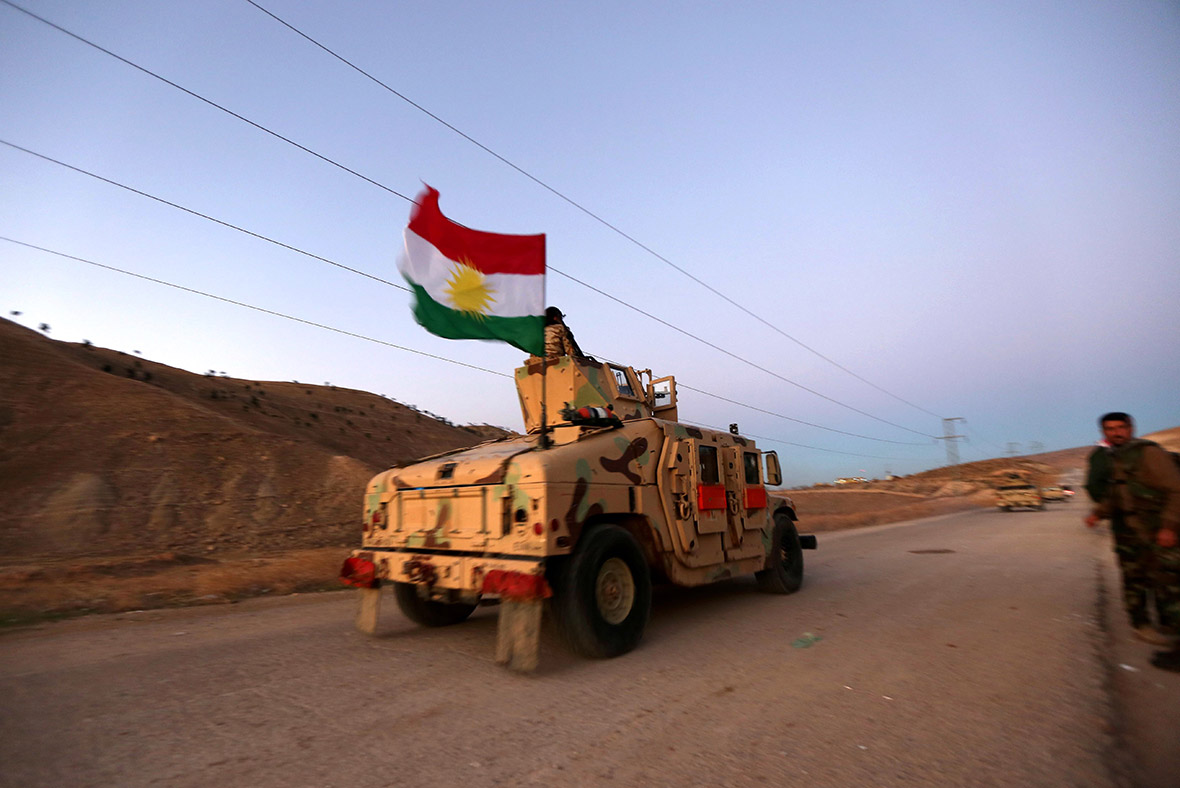Iraq: Operation Free Sinjar assaults Isis stronghold with Kurdish fighters and US air strikes
Kurdish fighters, backed by US-led air strikes, have captured several villages in an attempt to retake the Iraqi town of Sinjar from Islamic State (Isis) militants who overran it more than a year ago. Thousands of Yazidis living in Sinjar were killed and enslaved by IS, causing the flight of tens of thousands of people. This focused international attention on the Islamist group's violent campaign to impose its radical ideology, and prompted the US to launch air strikes against the militants.
The major objective of the offensive launched on 12 November is to completely cut off Highway 47, which passes Sinjar and indirectly links the militants' two biggest strongholds — Raqqa in Syria and Mosul in northern Iraq — as a route for goods, weapons and fighters. Coalition-backed Kurdish fighters on both sides of the border are now working to retake parts of that corridor.
US-led coalition air strikes pounded IS-held areas in the town, as around 7,500 Kurdish special forces, peshmerga and Yazidi fighters descended from the mountain that shares its name with the town towards the frontline in a military convoy. However, Sinjar is not an easy target. One attempt by the Kurds to retake it stalled in December. The militants have been reinforcing their ranks in Sinjar recently in expectation of an assault. "On the radio we hear [IS] calling for reinforcements from Syria," Rebwar Gharib, a deputy sergeant on the central front line in Sinjar, said.







The Kurdistan Workers' Party (PKK) has trained a Yazidi militia in Sinjar, while tribal groups operate independently. Several thousand Yazidis have also joined the peshmerga. For Yazidi forces taking part, the battle is very much about retribution.
IS inflicted a wave of terror against the minority Yazidi community, members of an ancient religion whom the Islamists view as heretics, accusing them of worshipping the devil. An untold number were killed in the August 2014 assault, and hundreds of men and women were kidnapped – the women enslaved and given to militants across the group's territory in Iraq and Syria, many of the men believed killed, others forced to convert.
Tens of thousands of Yazidis fled into the mountains, where the militants surrounded them, leaving them trapped and exposed in the blazing heat. The crisis prompted the US to launch air drops of aid to the stranded, and then on 8 August 2014, it launched the first round of air strikes in what would mark the beginning of a broader coalition effort to battle the militant group in Iraq and Syria.
Some of those stranded on Mount Sinjar were rescued by Syrian Kurdish fighters, who cleared a path for the Yazidis to descend from the mountain, cross into Syria, then cross back into northern Iraq's Kurdish autonomous zone. Then in December, Kurdish fighters in north-western Iraq managed to drive the militants out of areas on the other side of the mountain, opening a corridor that helped many of the remaining displaced Sinjaris to escape. Those Kurdish fighters then tried to advance into Sinjar town itself but were fought off by the IS militants.











Most Yazidis have been displaced to camps in the Kurdistan region; several thousand remain in Islamic State captivity.
© Copyright IBTimes 2025. All rights reserved.






















